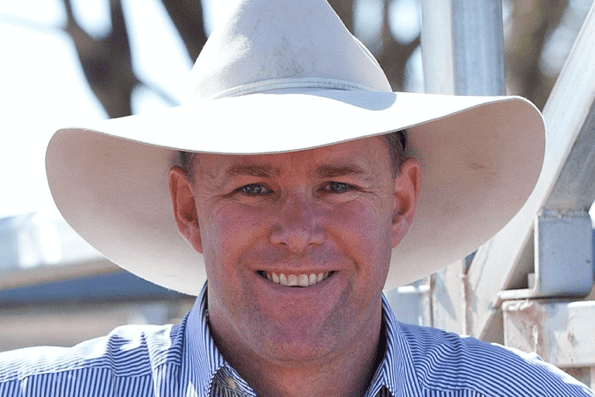
IMPROVING a breeding program to make greater use of the genetics within a herd, as well as to select the right animals for the next round of joining should always be done with a degree of curiosity.
Looking at the performance of a herd, or of individual cows, the focus of evaluation is often a simple “did she ‘stay’?”
In many cases this question is applied in the context of ‘stayability’, which is defined in southern Australia, at least, as: “The proportion of heifers that calve for the first time at two years of age and remain in the herd and produce a calf every year up to six years of age.”
While this is a good definition, asking simply if a cow ‘made it’, doesn’t always give the information needed to make improvements. Perhaps better questions are “Why did she stay, and how can we get more like her?”
A recent research paper, published in the Journal of Animal Science was conducted by researchers from University of New England in collaboration with the Angus Australia.
The study “Genetic evaluation of longevity in Australian Angus cattle using random regression models,” was conducted to determine the impact genetic selection has on longevity and production in herds, and to establish more effective measurement of these traits.

Dr Stephen Miller
Lead author Hinayah Oliveira, along with Professors Luiz Brito, Stephen Miller, and Flavio Schenkel, used Angus Australia’s database, as it is one of the largest and most comprehensive bred data bases in the world, with more than 1.4 million cows contributing data that includes multigenerational pedigrees, calving, culling and performance data.
Limitations around single point measurements
The research was conducted largely to address limitations around single point measurements such as ‘stayability’, which when used as a trait for selection can overlook other traits or factors of importance and potential bias a herd’s direction.
Some of the issues that limit the value of stayability as a trait including overlooking or ignoring cows that are still in a herd, as well as treating longevity as one trait.
It is known for example that the factors and traits that impact if a cow stays in a herd at four years of age are very different to the genetics that play a role in mature cows at eight or nine years.
There is also the restriction associated with stayability as a yes – no definition. “Did she meet the definition of six years of age with a calf every year?” This question doesn’t help answer the bigger question of “how long has she been in the herd?” or also “why did she leave the herd? Was it fertility, structure, temperament, etc?
This research considered the full extent of cow survival across time. Using a random regression model, the data was examined to consider the likelihood of a cow staying within a herd each year.
The value of these models lay in the ability to consider how much of her longevity is due to genetics; environment or management and to compare that over time as a cow ages.
In addition, the random regression models allow data to be examined for cows that are still in the herd. So even though their final age or condition may not yet be fully captured, their performance data so far can be used to develop a more accurate prediction of the genetic traits that have an influence.
The findings published offer potential opportunities for producers wanting to extend the longevity of their cow herd by addressing points other than the single definition of stayability as is commonly used.
Heritability of longevity
Longevity is heritable; however, it is a more lowly-heritable trait than many producers appreciate. The study found heritability ranged from 0.02 to 0.2 depending on age and reason for culling.
Furthermore, the genetic influence that plays out on a cow’s presence in the herd at a young age were found to be different to the traits that allow a cow to remain to an age of eight or ten years.
The study found low genetic correlations between early and late survival. In a practical sense, this means that while a cow may get through her first few years in a breeding herd, it doesn’t necessarily mean she will remain in a herd for a longer period.
Perhaps one of the more interesting findings to emerge came from analysing the data around for cows that had been culled from the herd. Typically, in breeding herds producers often only look at the cows that have been culled and the reasons for this.
However, the research found there was a limitation with this approach, particularly for producers who want to rank their sires on longevity. In only analysing culled cows, there is much larger group of cows in the breeding herd which are alive and working productively.
However, in not considering these cows, it becomes difficult to evaluate and potentially undervalues the daughters of sires because “their longevity story hasn’t finished yet.”
This effect was tested by comparing two data sets. The first contained only a list with daughters that had been culled from the herd (ALLRES) and the second included both daughters that had been culled along with active daughters that were still within the herd (ALLACT).
The result of this comparison saw a significant re-ranking of bulls (64pc) changing position. The impact is that in many cases younger bulls are often underrated as their daughters are still preforming in the herd.
Functional longevity
The research encourages a more detailed way to consider longevity within herds, by focussing on functional longevity: effectively, focussing on cows that calve each year – particularly beyond a six-year benchmark.
While some producers may see little difference between a stayability figure and functional longevity, the following table shows the difference in how these are measured.

In considering this research there are practical approaches for producers to consider. Firstly producers should ask:
- What influenced her departure – was it fertility, structure, temperament, or simply age?
- What do the patterns of the herd’s longevity tell about the sires in use and the environment?
Beyond asking these questions, there are additional steps that can be taken to create a better understanding of a breeding herd and move towards improvements in longevity.
Key recommendations include:
- Look beyond single-point traits like stayability. While it is a start in understanding, it doesn’t necessarily reveal all the issues that are of importance
- Record more than just culling reasons – track the age and productivity of cows still in the herd.
- Use bulls with well-rounded EBVs – particularly traits like Days to Calving, Foot and Leg Structure, Body Condition, and Temperament – which are more likely to influence how long daughters remain productive.
- Don’t discount younger bulls just because their daughters haven’t been culled yet.
For producers, tracking both culled and active cows, and in selecting sires with traits that are linked to fertility, structure and temperament it is possible to make long term improvements to herd productivity.
 Alastair Rayner is the General Manager of Extension & Operations with Cibo Labs and Principal of RaynerAg. Alastair has over 28 years’ experience advising beef producers & graziers across Australia. He can be contacted here or through his website www.raynerag.com.au
Alastair Rayner is the General Manager of Extension & Operations with Cibo Labs and Principal of RaynerAg. Alastair has over 28 years’ experience advising beef producers & graziers across Australia. He can be contacted here or through his website www.raynerag.com.au

HAVE YOUR SAY